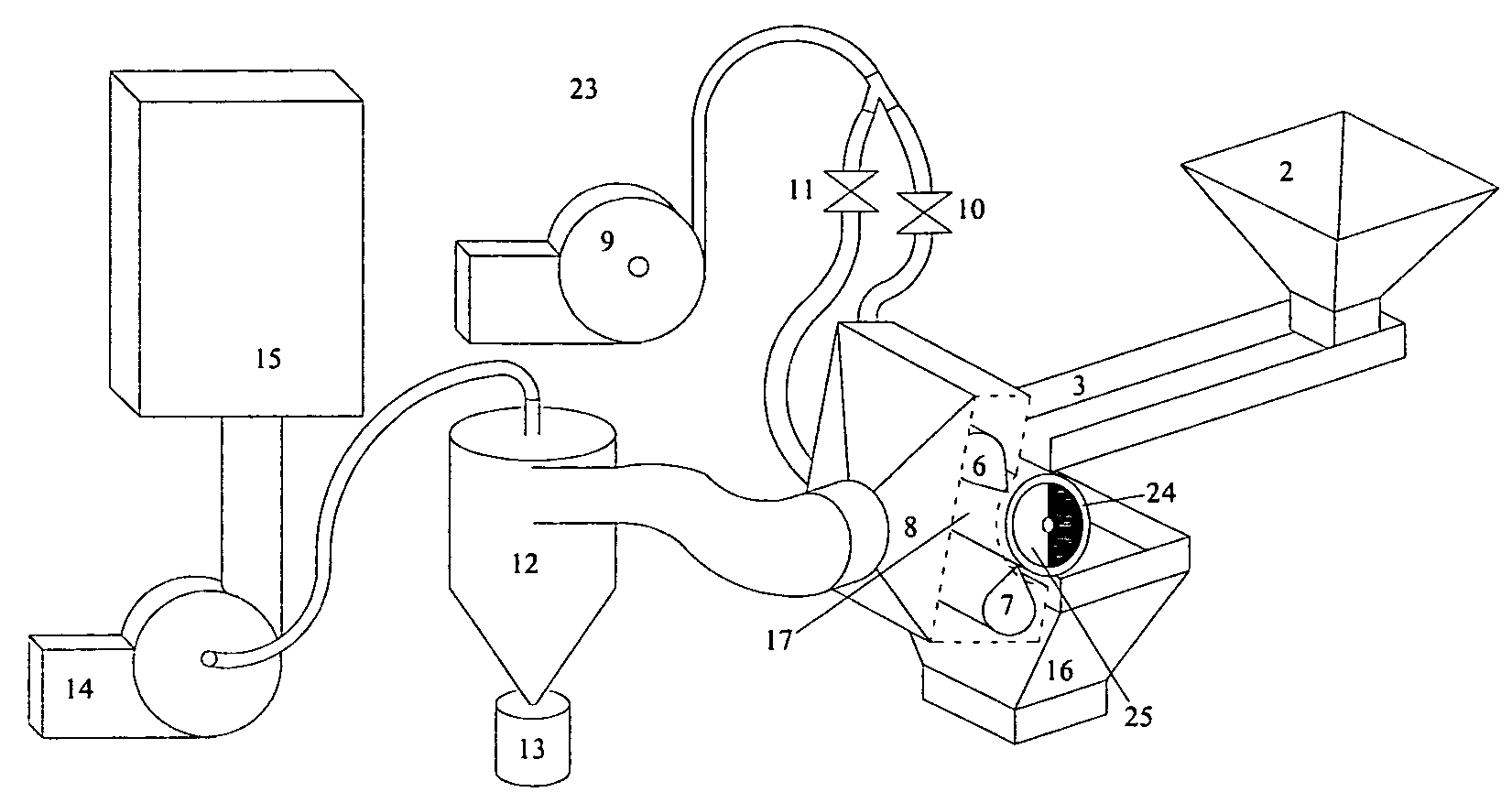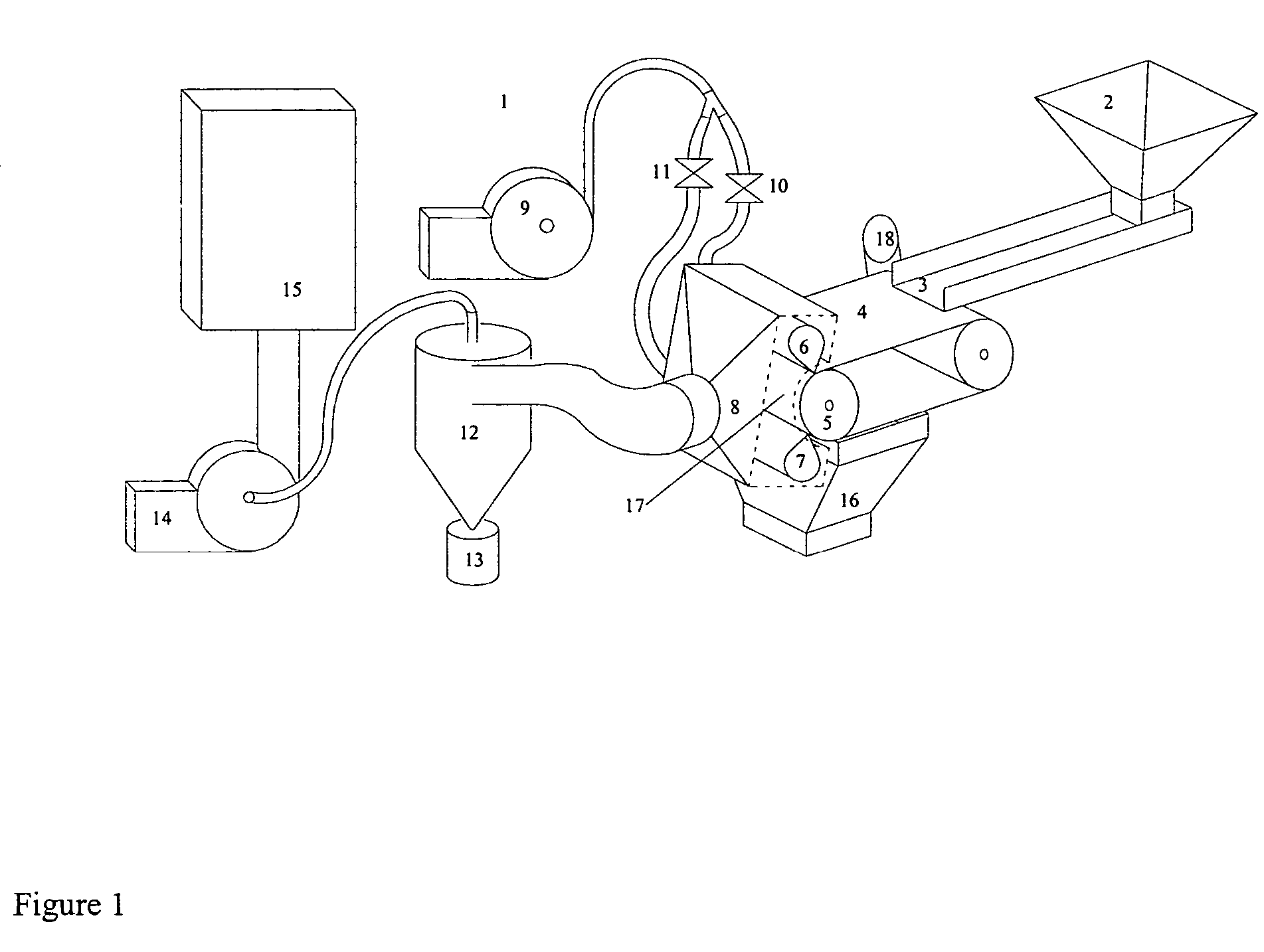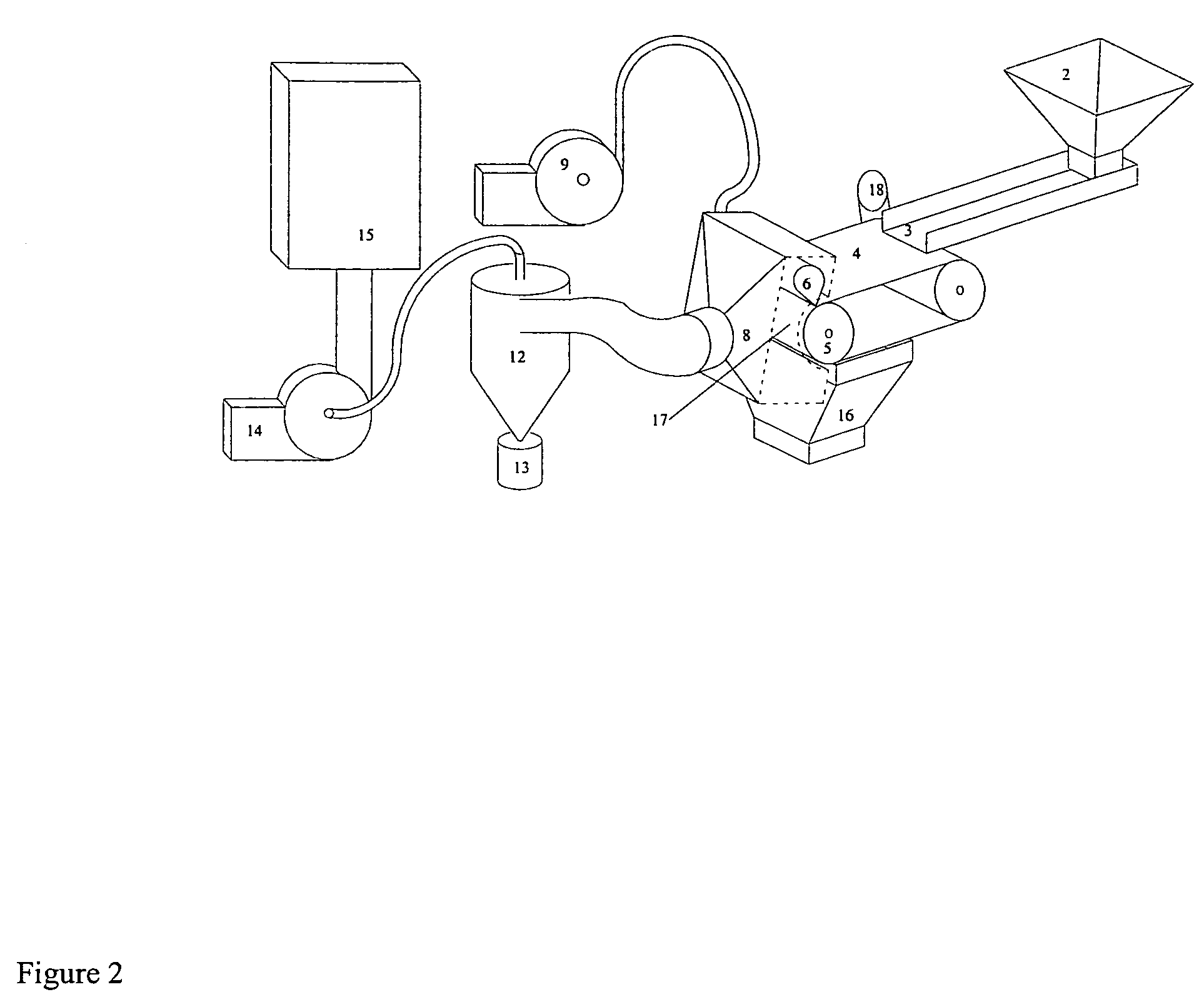VacuMag magnetic separator and process
a magnetic separator and vacuum magnet technology, applied in the field of magnetic separators, can solve the problems of limited space, increased cost of impounding, and low loss of fly ash ignition (loi) of fly ash,
- Summary
- Abstract
- Description
- Claims
- Application Information
AI Technical Summary
Benefits of technology
Problems solved by technology
Method used
Image
Examples
examples
[0055]In the following examples, gas drag forces were used to mix particles, disperse agglomerates, and remove diamagnetic and weakly paramagnetic particles from the conveyor belt. In other tests without the gas drag forces, a layer of fly ash collected on the belt up to 2 mm thick and did not fall off even after passing beneath the magnetic mechanism. The agglomerating forces and attractive forces to the belt were stronger than gravity and centrifugal forces that would pull the particles off of the belt. However, in none of the examples cited below which incorporated gas drag forces did a significant mass of particles stick to the belt. The less magnetic fractions were lifted off the belt and carried away by the gas stream, and the magnetic fractions were carried to the bottom of the magnetic mechanism by the belt where they fell off.
[0056]Three dry (less than 0.3% moisture) samples of fly ash from an Eastern U.S. pulverized coal fired power plant were separated using a separator a...
PUM
| Property | Measurement | Unit |
|---|---|---|
| sizes | aaaaa | aaaaa |
| thicknesses | aaaaa | aaaaa |
| distance | aaaaa | aaaaa |
Abstract
Description
Claims
Application Information
 Login to View More
Login to View More - R&D
- Intellectual Property
- Life Sciences
- Materials
- Tech Scout
- Unparalleled Data Quality
- Higher Quality Content
- 60% Fewer Hallucinations
Browse by: Latest US Patents, China's latest patents, Technical Efficacy Thesaurus, Application Domain, Technology Topic, Popular Technical Reports.
© 2025 PatSnap. All rights reserved.Legal|Privacy policy|Modern Slavery Act Transparency Statement|Sitemap|About US| Contact US: help@patsnap.com



